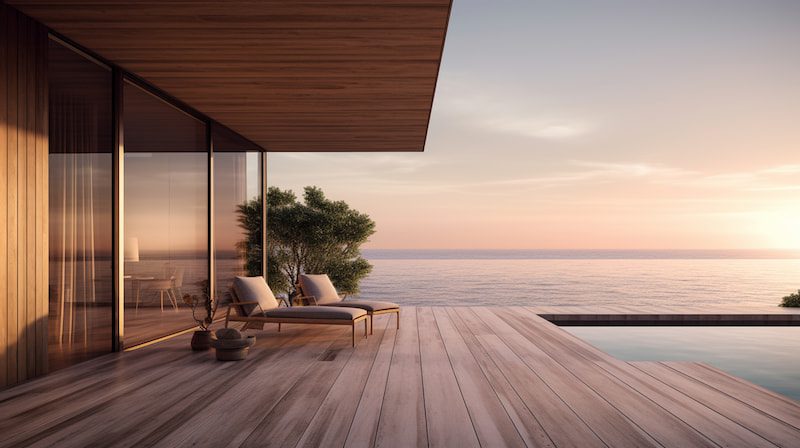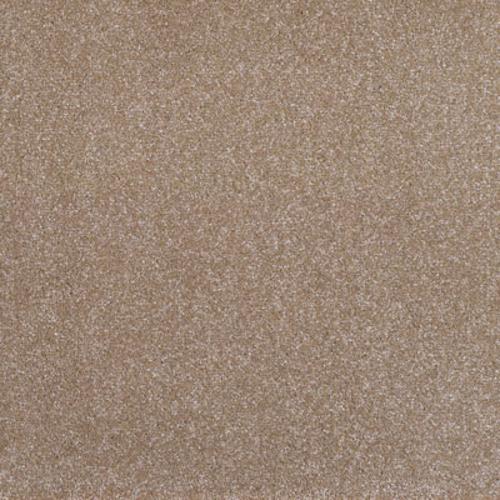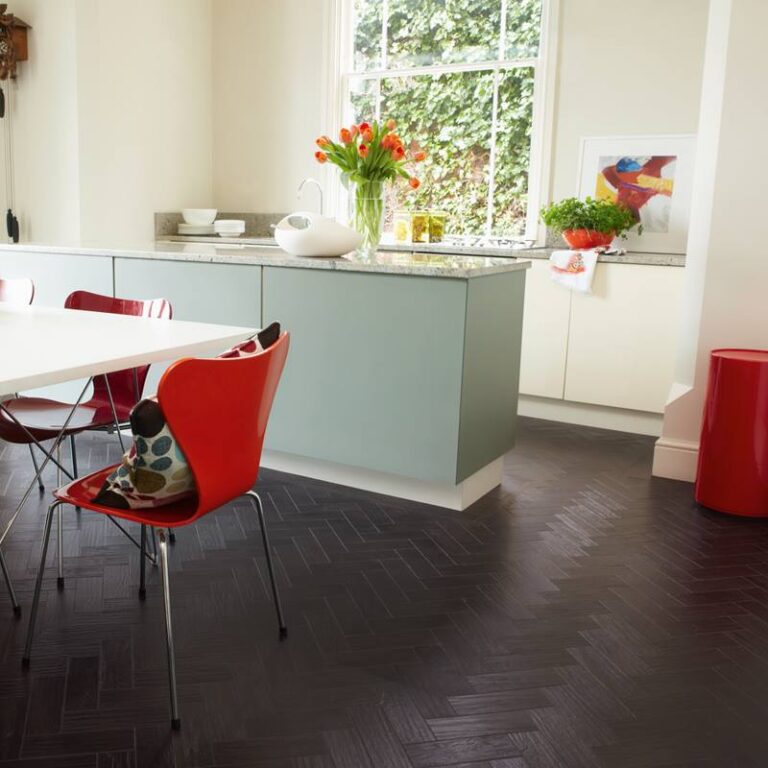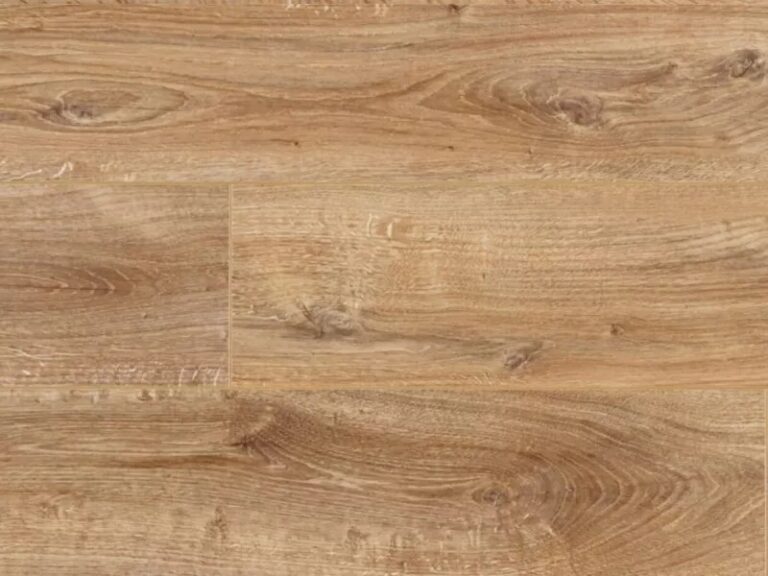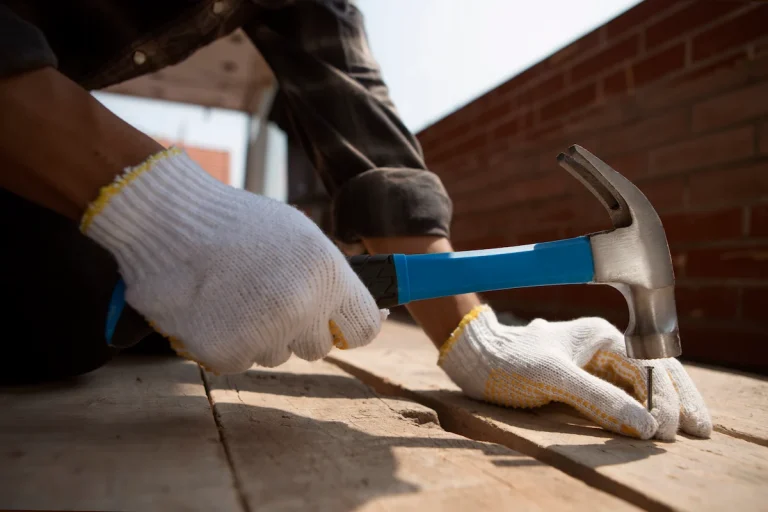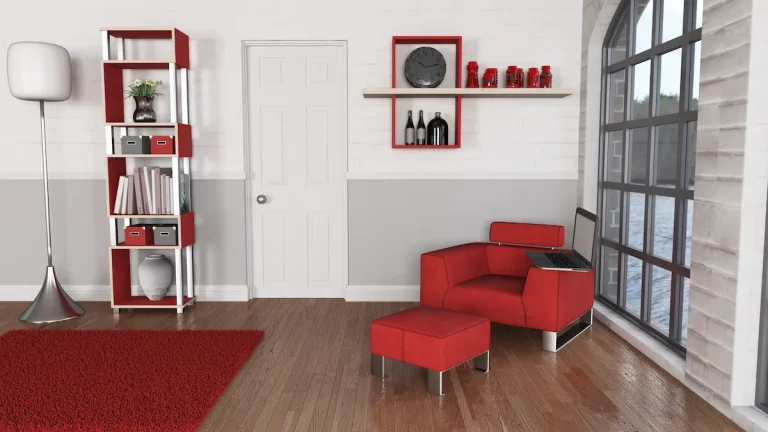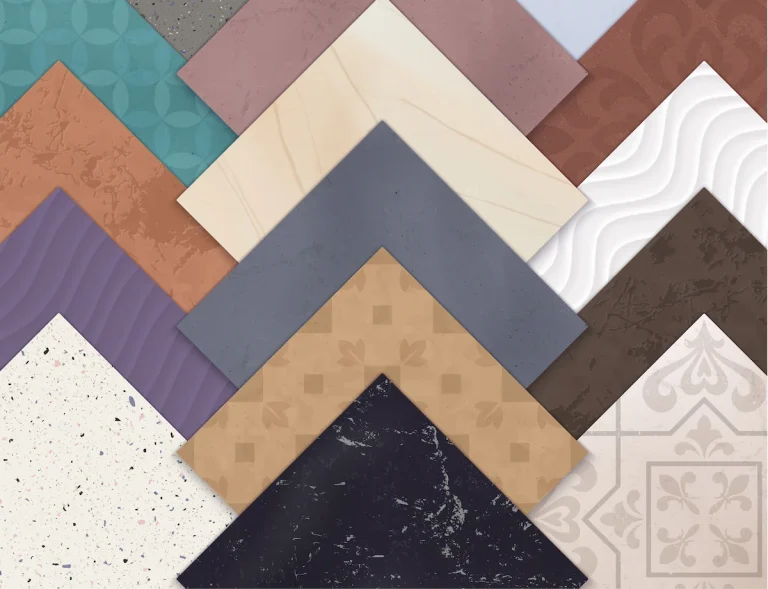A summerhouse serves as more than merely a seasonal retreat; it is a space dedicated to relaxation and creativity that warrants careful consideration in its design, beginning with the selection of appropriate summerhouse flooring. Selecting the ideal flooring not only enhances the aesthetic appeal of the summerhouse but also guarantees durability and comfort.
This guide examines a range of flooring options—from traditional wood to contemporary vinyl—and outlines critical factors to consider prior to installation. Whether one is renovating an existing structure or constructing a new one, this information will assist in the creation of a beautiful and functional space.
The Importance of Choosing the Right Flooring for a Summerhouse
Selecting the appropriate flooring for a summerhouse is essential, as it significantly influences the functionality, durability, and overall aesthetic appeal of the space. Considering the various roles a summerhouse can serve—ranging from a comfortable reading area to an active garden workshop—the flooring must be capable of withstanding different outdoor conditions while delivering both comfort and style.
The ideal flooring for a summerhouse not only enhances the interior finishes but also ensures a cohesive integration with the outdoor environment. Therefore, it is imperative to examine durable flooring options that require minimal maintenance and can effectively manage moisture and wear.
The Different Types of Flooring for a Summerhouse?
Selecting the appropriate flooring for a summerhouse involves considering various options that address both aesthetic preferences and functional requirements. Each flooring type—such as wood, laminate, vinyl, and tiles—possesses distinct characteristics that render it suitable for specific applications within the space.
It is crucial for homeowners to understand the advantages of each flooring material in order to create a visually appealing and practical environment that enhances outdoor living experiences.
1. Wood Flooring
Wood flooring represents a timeless selection for summerhouses, providing warmth, aesthetic appeal, and a natural ambience that harmonises with outdoor environments. It is available in various forms, including engineered wood and solid hardwood options, both of which enhance interior design while offering comfort underfoot. The use of tongue and groove boards can contribute to a seamless and visually appealing finish, making this choice particularly favoured by homeowners seeking to embody the essence of nature within their outdoor retreats.
The advantages of wood flooring extend beyond its visual appeal. The durability of high-quality wood ensures that it can endure the wear and tear associated with frequent use, making it an ideal choice for summerhouses where families frequently gather. Different types of wood, such as oak or pine, each offer distinct aesthetics and characteristics that can significantly impact the overall ambience.
Maintenance of wood flooring is relatively straightforward; regular sweeping and occasional polishing can help preserve its beauty and longevity.
- Engineered wood provides exceptional stability in varying temperature conditions.
- Solid hardwood imparts a rich, traditional appearance.
- Various finishes can enhance or modify the wood’s natural colour, allowing for customisation.
Ultimately, selecting the appropriate wood flooring and the correct installation method is essential for achieving a cohesive look that enhances the overall atmosphere of any summerhouse.
2. Laminate Flooring
Laminate flooring has become an increasingly popular choice for summer houses due to its affordability, durability, and low-maintenance characteristics. Designed to replicate the appearance of natural materials while providing a resilient surface, laminate flooring is particularly well-suited for high-traffic areas within a summer house, such as garden workshops or family gathering spaces. Its versatility enables homeowners to select from a wide range of styles and finishes, offering a practical flooring solution that maintains visual appeal.
Along with its aesthetic advantages, laminate flooring is distinguished by its exceptional durability, making it a prudent investment for any summer house. This flooring material is resistant to scratches, dents, and stains, ensuring it can endure the wear and tear associated with everyday use.
The ease of maintenance is another significant benefit, as simple sweeping and occasional mopping suffice to keep the flooring looking fresh and clean. Homeowners can enjoy the beauty of their flooring without the burden of extensive upkeep.
- Durability: Ideal for active family lifestyles and frequent visitors.
- Maintenance: Minimal effort required to maintain its appearance.
- Design Flexibility: Available in a variety of styles that complement any décor theme.
The design flexibility of laminate flooring allows for seamless integration into diverse décor styles—from rustic cabins to contemporary beach houses—enabling homeowners to create the ideal ambiance for their summer retreats.
3. Vinyl Flooring
Vinyl flooring presents a highly suitable option for summerhouses, particularly in regions susceptible to moisture or spills, as it provides comprehensive waterproof flooring solutions capable of withstanding outdoor conditions. Renowned for its versatility and ease of installation, vinyl flooring is available in a wide array of styles and colours, enabling homeowners to achieve a customised finish that aligns with their design preferences.
This moisture-resistant flooring material is also easy to maintain, rendering it appropriate for environments frequented by children and pets.
Due to its exceptional resistance to water damage, vinyl flooring contributes to the preservation of the underlying surfaces, making it an ideal selection for summerhouses where humidity levels may vary.
Notable features of vinyl flooring include its extensive range of design options that can replicate the appearance of natural wood or stone, thereby offering a sophisticated aesthetic without incurring the associated maintenance costs. Additionally, vinyl flooring is recognised for its comfort underfoot, which is advantageous for individuals spending extended hours during weekend retreats.
Moreover, basic maintenance is straightforward; routine sweeping and mopping are typically sufficient to preserve its pristine appearance. This combination of durability, visual appeal, and ease of upkeep establishes vinyl flooring as a practical choice for those seeking to enhance their summerhouse experience.
4. Tile Flooring
Tile flooring presents a sophisticated and durable solution for summerhouses, particularly in areas subject to outdoor conditions or significant foot traffic. Available in a range of textures, colours, and designs, tile flooring offers an elegant finish that enhances the overall aesthetic of the space. Its resistance to moisture and ease of maintenance make it a practical option, ensuring that homeowners can uphold a beautiful and functional environment within their outdoor retreats.
Along with its aesthetic advantages, one of the prominent attributes of tile flooring is its exceptional durability, making it suitable for both sunny weather and unexpected rain showers. This type of flooring is designed to endure everyday wear and tear, ensuring that the summerhouse remains welcoming year after year.
- Tile options frequently feature slip-resistant surfaces, thereby enhancing safety in potentially wet conditions.
- Another significant advantage is the minimal maintenance required; typically, a simple sweep and occasional damp mop suffice to preserve the tiles’ pristine appearance.
- Given its resilience to stains, heat, and scratches, this flooring not only reduces upkeep time but also retains its beauty under various conditions.
For those aiming to create an idyllic outdoor living space, tile flooring effectively combines practicality with style, providing a long-lasting solution that both homeowners and guests will appreciate.
Factors Should Be Considered When Choosing Summerhouse Flooring
When selecting flooring for a summerhouse, it is imperative to consider several key factors to ensure that the chosen materials adequately meet the specific requirements of the space. Among these factors are the climate and weather conditions, which significantly influence the durability and maintenance needs of the flooring. Considering garden room ideas and outdoor buildings can further guide your choices.
Additionally, aesthetic and design preferences play a crucial role in determining the overall appearance and ambience of the summerhouse. Opting for bespoke finishes and exploring various flooring trends can greatly enhance the visual appeal. Understanding the interaction between these elements is essential for making a well-informed flooring decision that enhances both functionality and style. Exploring different laminate options and luxury vinyl tiles can offer practical solutions for a summer house update.
1. Climate and Weather
The climate and weather conditions in which a summerhouse is situated significantly influence the selection of the most appropriate flooring materials.
When evaluating summerhouse flooring, it is essential to recognise that various flooring materials react differently to changes in moisture and temperature. For example, hardwood flooring may expand in humid conditions and contract in dry environments, which can lead to warping or gaps. Alternatively, opting for engineered oak or pressure-treated wood can mitigate these issues. In contrast, materials such as vinyl or ceramic tile exhibit greater resistance to moisture damage, making them more suitable for areas exposed to dampness. Additionally, luxury vinyl tiles and Unnatural Flooring offer moisture-resistant properties.
- Vinyl Flooring: Highly water-resistant and easy to maintain.
- Ceramic Tiles: Durable and appropriate for environments with fluctuating temperatures.
- Engineered Wood: Provides a balance between aesthetic appeal and moisture resistance.
Ultimately, understanding the impact of climate on these flooring options enables homeowners to make informed decisions that enhance the comfort and functionality of their summerhouse. Consulting with experts on summer house design can provide valuable insights.
2. Durability and Maintenance
Durability and maintenance are essential considerations when selecting flooring for a summer house, as these factors significantly influence the longevity and appearance of the space. Choosing hardwearing floor materials and low-maintenance options can ensure lasting satisfaction.
When evaluating suitable flooring options, it is imperative to acknowledge that durable materials not only endure foot traffic and wear but also resist moisture and environmental changes characteristic of summer retreat settings. Homeowners often opt for specific flooring solutions that combine resilience with low maintenance requirements, such as hard wearing flooring:
- Luxury Vinyl Plank (LVP): Recognised for its water resistance and ease of cleaning, making it an excellent choice for summer houses. Additionally, hardwearing flooring options like this require minimal maintenance.
- Tile Flooring: Provides outstanding durability and is resistant to scratches and stains, making it ideal for high-traffic areas.
- Engineered Hardwood: Offers the aesthetic appeal of natural wood while being less prone to warping and moisture damage. Considering floor panels and reclaimed materials can further enhance durability and eco-friendliness.
By selecting these materials, individuals can enjoy their summer houses for years to come with minimal maintenance demands, thereby allowing for increased leisure and relaxation. Consulting with flooring contractors can provide additional homebuilding advice.
3. Aesthetics and Design
The aesthetics and design of summer house flooring play a vital role in shaping the overall ambience of the space, making it essential for homeowners to select materials that align with their vision. Whether one opts for a bespoke finish that highlights unique textures or chooses contemporary design elements that complement interior finishes, the flooring should enhance the atmosphere of the summerhouse. Incorporating textured materials can add depth to your design. Thoughtful design choices contribute to the creation of a cohesive and visually appealing environment that reflects personal style. Exploring contemporary design trends and garden paving ideas can enhance the aesthetics.
When evaluating flooring options, homeowners may find themselves attracted to various trends that emphasise both durability and aesthetics.
- Natural wood finishes in lighter shades can evoke a refreshing coastal vibe, ideal for warm summer days.
- Tiles that imitate natural stone not only provide a sophisticated appearance but also ensure easy maintenance, making them an appealing choice for active summerhouses.
- For those inclined towards a more modern aesthetic, polished concrete paired with colourful area rugs introduces a sleek yet inviting ambience.
Incorporating eco-friendly materials is in line with the growing trend towards sustainability, allowing homeowners to create stylish interiors while being mindful of environmental impacts. This aligns with broader sustainable building practices.
Ultimately, the selection of the appropriate flooring can serve as the foundation for a summer house’s design, harmonising with the surrounding nature and the owner’s personal aesthetics.
How to Prepare the Floor for Summerhouse Flooring Installation
Preparing the foundation for summer house flooring installation is crucial for achieving a successful and enduring outcome, necessitating meticulous attention to detail and diligent execution of appropriate DIY tasks. This includes considering insulation options and ensuring proper support for the flooring materials.
The initial step in this process involves assessing the existing subfloor and carrying out any required repairs or adjustments to establish a stable foundation for the new flooring.
By investing time in proper preparation of the area, homeowners can implement effective solutions that enhance both the durability and aesthetic appeal of their chosen summer house flooring materials. Exploring various floor coverings and ensuring they are suitable for indoor spaces can further enhance the outcome.
The Steps to Installing Summerhouse Flooring
The installation of summerhouse flooring involves a series of systematic steps that are essential for achieving a high-quality finish and ensuring long-lasting results. From the selection of suitable flooring materials to the precise laying of boards or tiles, each stage of the installation process necessitates careful consideration and practical solutions to attain optimal outcomes.
Additionally, homeowners may choose to incorporate features such as underfloor heating to enhance comfort, thereby improving the overall experience within their summerhouse.
1. Measure and Cut the Flooring Materials
The initial step in installing summerhouse flooring involves accurately measuring and cutting the flooring materials to ensure a precise fit within the designated space. Employing proper measuring techniques not only serves to minimise waste but also contributes to a seamless and professional-looking installation. Using conventional flooring methods can also ensure consistency and quality in the project.
It is advisable for homeowners to invest time in carefully planning their cuts and adjustments, thereby establishing a solid foundation for a successful summerhouse flooring project.
Achieving accurate measurements necessitates precision and the appropriate tools, ensuring that each component aligns perfectly without gaps or overlaps. To facilitate this process, the following tools should be considered:
- A Laser Level: This tool provides a straight line for guiding cuts, ensuring alignment across larger areas.
- A Measuring Tape: Essential for obtaining precise lengths and widths, it is recommended to use this tool in conjunction with a helper for larger pieces.
- Square and Chalk Line: These tools are instrumental in marking cutting lines, which are vital for achieving uniform edges.
Taking the time to plan the layout can significantly impact the overall aesthetic and functionality of the flooring. Developing a cutting plan that considers the grain direction and desired pattern can streamline the installation process and produce outstanding results.
2. Prepare the Subfloor
Preparing the subfloor is a critical component of the flooring installation process, as it ensures that the surface is adequately prepared to support the selected summer house flooring materials.
This initial stage necessitates meticulous attention to detail, beginning with a comprehensive cleaning of the area to eliminate any debris, dust, or remnants of old flooring that could potentially impede the new installation.
Subsequently, conducting a moisture test is essential, as excessive moisture can lead to warping and other long-term issues. Should any moisture-related problems be identified, they must be addressed promptly to prevent further damage.
Once these assessments are completed, any required repairs should be undertaken, such as filling in cracks or leveling the surface, to guarantee that the area is stable and suitable for the high-quality summer house flooring that will be installed.
A well-prepared subfloor not only enhances the aesthetic appeal but also significantly contributes to the longevity and performance of the flooring, enabling it to effectively withstand outdoor conditions.
3. Lay the Flooring
Laying the flooring represents the subsequent phase in the installation process, during which homeowners may employ various techniques to achieve a secure and aesthetically pleasing finish.
Understanding these methods can greatly impact the overall outcome of the project. When homeowners take into account factors such as the existing subfloor and environmental conditions, the effectiveness of their selected flooring techniques is significantly enhanced.
For example, during the installation process, it is crucial to allow for appropriate expansion gaps, particularly in solid hardwood applications. The use of suitable adhesives or underlayments can facilitate moisture control, thereby contributing to the durability of the flooring.
- Tongue and Groove: This traditional method features interlocking edges that create a robust and reliable bond.
- Click-Lock: Renowned for its installation efficiency, this technique permits easy adjustments without the necessity for adhesive.
- Staples and Nails: The application of fasteners can offer additional support, particularly in high-traffic areas.
In conclusion, meticulous planning and execution will result in a beautiful and long-lasting floor.
4. Finish and Seal the Flooring
Finishing and sealing the flooring represents a crucial final step in the installation process, significantly enhancing both the aesthetic appeal and durability of summer house flooring. The application of protective coatings or sealants enables homeowners to protect their flooring from moisture, scratches, and general wear and tear, thereby ensuring its beauty endures for many years. This process also facilitates maintenance, as sealed flooring is easier to clean and maintain, contributing to the overall longevity of the summerhouse environment.
When selecting the appropriate finish for summerhouse flooring, homeowners have a range of options to consider. The following are some popular choices:
- Polyurethane sealants: These offer a robust protective layer that resists both moisture and wear while accentuating the natural beauty of the wood.
- Oil-based finishes: Suitable for those desiring a warm, amber hue, these finishes penetrate the wood, providing excellent protection against scratches.
- Water-based coatings: Renowned for their quick drying times and low odour, these finishes deliver a clear, durable layer and represent an environmentally-friendly option.
By selecting a suitable finishing option, homeowners can significantly enhance both the aesthetic and functional characteristics of their space, ensuring that each summer spent in the house is as enjoyable and worry-free as possible.
Some Tips for Maintaining Summerhouse Flooring
Maintaining the flooring of a summerhouse is essential for preserving its aesthetic appeal and extending its lifespan, necessitating regular attention and care. Homeowners should consider implementing various maintenance strategies, such as selecting durable flooring materials that can withstand wear and tear, as well as utilising appropriate cleaning solutions specific to the flooring type.
By establishing a routine maintenance schedule and adopting a proactive approach to flooring care, including choosing the right flooring choice, homeowners can ensure that their summerhouse remains enjoyable for years to come without compromising its visual appeal.
Some Common Mistakes to Avoid When Installing Summerhouse Flooring
When installing flooring in a summer house, it is crucial to avoid common mistakes that may result in unsatisfactory outcomes or premature deterioration of the materials. Homeowners should be mindful of potential pitfalls, including inadequate subfloor preparation, incorrect measurements, and failure to consider climate conditions.
By identifying these issues and implementing effective solutions, the flooring installation process can be executed successfully, resulting in an attractive and functional summer house.
Choosing the right flooring for your summerhouse is essential for creating a comfortable and stylish retreat. Opting for durable materials, such as engineered wood, laminate, or luxury vinyl tiles ensures longevity while maintaining a welcoming atmosphere.
At TEKA Flooring, we offer a wide range of high-quality flooring solutions perfect for summerhouses. Whether you’re looking for a rustic charm or a modern aesthetic, our expert team can help you find the ideal flooring that balances beauty and functionality.
Visit TEKA Flooring today to explore our collection and take advantage of our professional fitting services. Let us help you transform your summerhouse into a stunning and inviting space that you can enjoy year-round!
Read also:


























